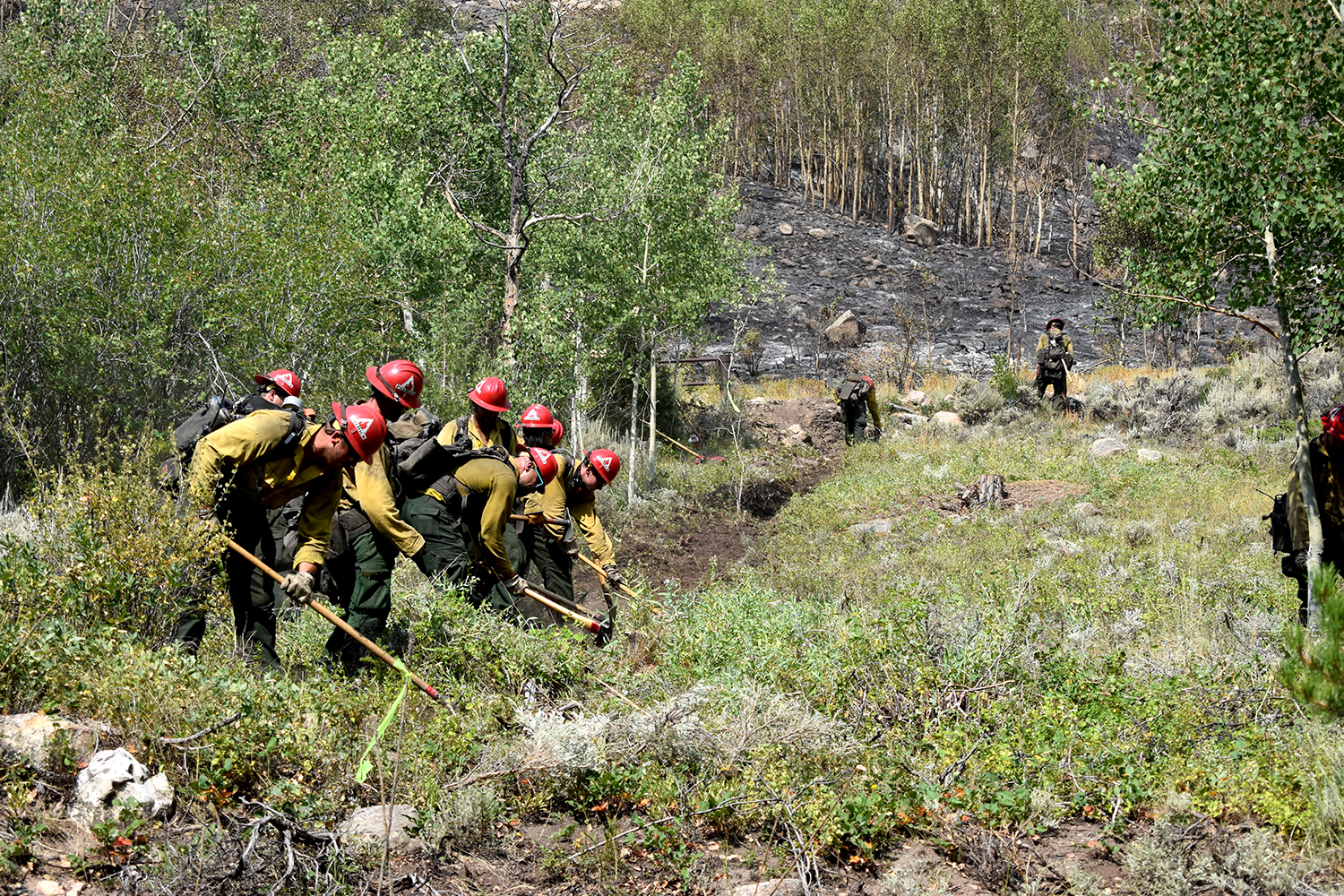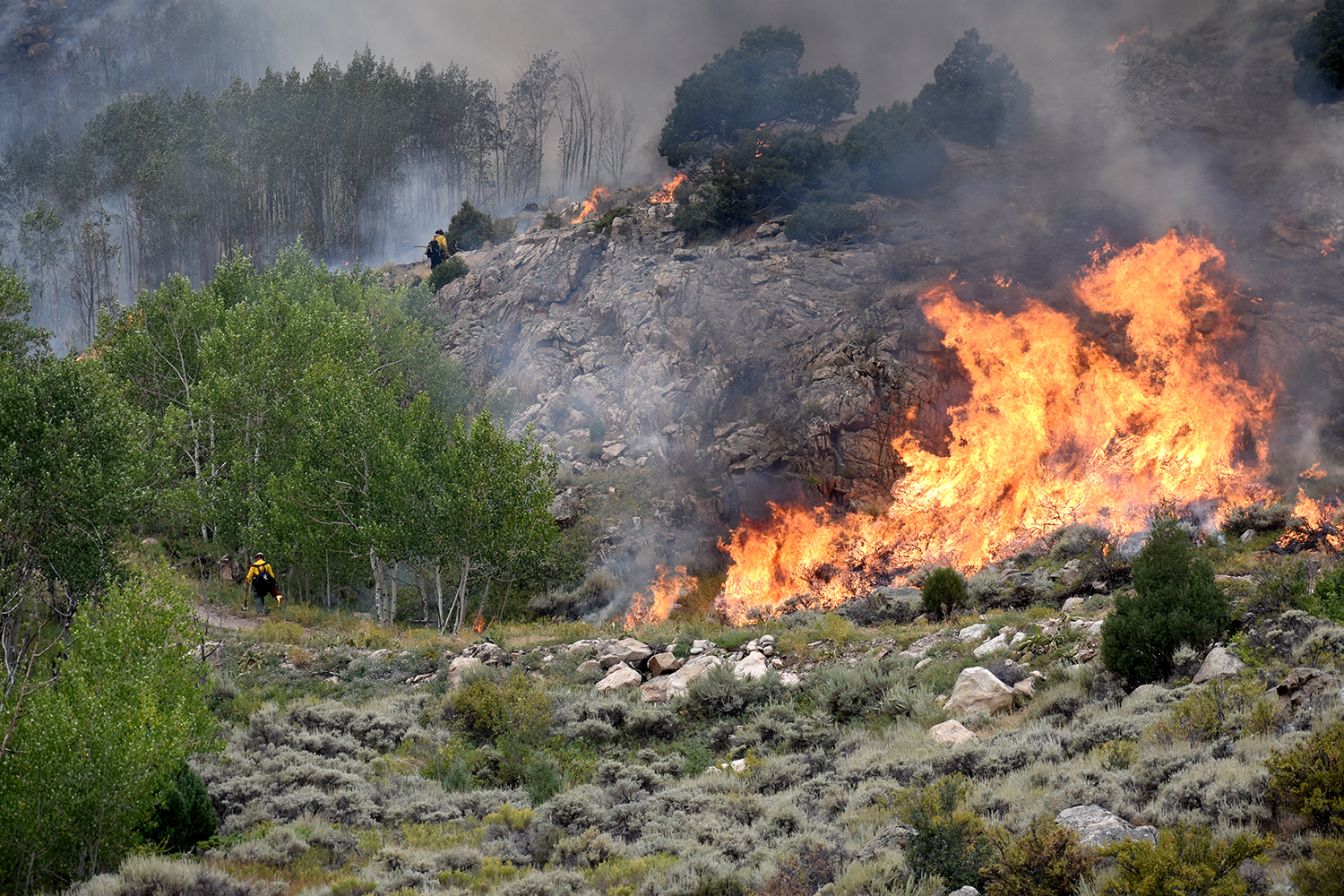NextGenRadio
@Colorado Public Radio
Finding, coaching and Training public media’s next generation.
“In the Time of COVID-19”
Between Two Crises: Fighting Wildfires During a Pandemic
As the world goes virtual to combat the spread of the coronavirus, so do some aspects of wildland firefighting.
Lance Elmore, a deputy incident commander for the Cameron Peak Fire, leads meetings with administrators and firefighters over Zoom instead of in person.
Since the Cameron Peak fire ignited on Aug. 13 west of Fort Collins, it has burned more than 104,791 acres — roughly the size of Denver — and is still ablaze.
In addition to dealing with the fire, Elmore works to slow the spread of COVID-19.
“We’ve had 23 positive [COVID-19] cases on the fire. That’s through its entirety, you know, from the beginning in August. So yeah, we have to deal with that,” Elmore says.
Between Two Crises

“Early in the year, the phrase kind of caught on, which was like a ‘module of one,’” Elmore says.
A ‘module of one’ is the small group of firefighters on a crew, sometimes assigned to a truck or engine, who all stay together in a unit to avoid the spread of COVID-19, he explains.
“If you were on a 20-person crew or on an engine with five people, that’s your module of one. That’s your little family unit,” he says.

“We would have had one large briefing with most of those people,” he says.
That’s not happening anymore. For this interview, Elmore was reached over Zoom in a hotel room near his command post, which is set up in Loveland at the Budweiser Event Center about a two hour drive from the fire.
However, Elmore says people on the frontline use the same tactics and strategies to fight the fire. It’s the communication methods that have changed. They’re doing briefings on the radio and over Zoom.
“It’s challenging, you know, starting out with the pandemic in March,” Elmore says. “We started talking about ways to do this and not have those large groups and what kind of technology we needed.”
Elmore says in April and May they used simple technology, like phones with the Zoom app, for briefings. Since then, he says, they’ve gotten more advanced using newer devices that have multiple microphones and show a 360-degree view of the room.
During the briefings, administrators and firefighters discuss plans, safety, and what’s happening on the ground, since people on the frontline may not know what’s going on at other sections of the fire.

He says online meetings can save valuable time for officials who, in the past, drove hours to meet in person. But he sees drawbacks with virtual communication. He says he feels he needs to overcommunicate since he can’t see people’s reactions or read body language.
“One of the biggest downfalls to the technology side of things is there is just the time it takes to communicate and how easily things are misunderstood,” Elmore says.
And he says that’s a challenge when things aren’t going well with a fire.
“I was asked early on, even in high school, you know, if I thought that fighting fire would be something that I wanted to do. And I say, no, I think I’ll pass on that,” Elmore says.
Everything changed for Elmore when he took a temporary job as a wildlife technician when he was in his early 20s.
“I went to a couple, two or three fires that summer, and that was that was kind of it,” Elmore says.
Elmore says relationships get built quickly on the job because firefighters put their life in each other’s hands.
He says he has friends he met through firefighting, and they stayed in contact, but some have died in the line of duty.
“Those are the things that always kind of stick with you. You just don’t forget them,” Elmore says.

“I would prefer to sit down in a room with people and talk to them face to face and have more of that interaction,” Elmore says. “But I don’t think we’ll go back.”
About NextGenRadio
The Next Generation Radio Project is a week-long digital journalism training project designed to give competitively selected participants, who are interested in radio and journalism, the skills and opportunity to report and produce their own multimedia story. Those chosen for the project are paired with a professional journalist who serves as their mentor.
This edition of the #NPRNextGenRadio project was produced in collaboration with Colorado Public Radio in September 2020.
Acknowledgements
Our audio engineer is Patrice Mondragon and Selena Seay-Reynolds.
Our illustrator is Ard Su and Emily Whang.
Our visuals editors are Erica Lee and Kevin Beaty.
Our web producer is Robert Boos.
Our managing editor is Traci Tong.
Our digital editors are Megan Verlee and Laura Isensee.
Special thanks to our journalist-mentors this week:
- Taylor Allen
- Sam Brasch
- Graham Brewer
- Ariel Van Cleave
- Mariana Dale
- Maggie Freleng
NPR’s Next Generation Radio program is directed by its founder, Doug Mitchell.